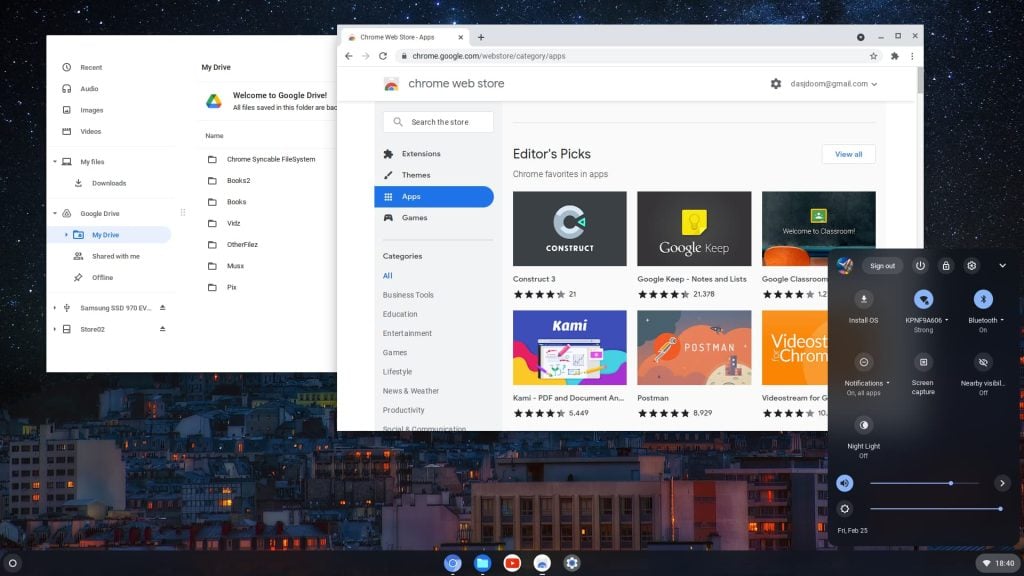Windows 10's EOL is close & your PC doesn't support Windows 11. Now what?
Don't lose hope just yet!
4 min. read
Published on
Read our disclosure page to find out how can you help Windows Report sustain the editorial team. Read more

As Windows 10’s End of Support (EoS) is nearing, many of you are left in a frenzy. There is no clarity about the available options. All you know is that Windows 10 won’t receive any updates, security or otherwise, after October 25, 2025!
If your PC doesn’t meet the system requirements for Windows 11 and can’t be upgraded to the latest iteration, fret not!
You can continue using Windows 10, upgrade to Windows 11 with a few tricks, or switch to a different operating system. Let’s explore all the possibilities!
What options do I have?
1. Install Windows 11 after bypassing system requirements
At present, if you ask us, the best option is to install Windows 11 on unsupported PCs. While Microsoft claims that these systems may not receive updates, we haven’t seen many such cases. Of course, this may change in the future!
Since upgrading to Windows 11 is so tricky, especially the Registry tweaks to bypass the system requirements, many tools to create a bootable USB, like Rufus, now offer a dedicated option to remove checks for requirements like TPM 2.0, Secure Boot, and 4 GB RAM.
So, upgrade to the latest iteration. When we compared Windows 11 and Windows 10, the former emerged as a better operating system for a lot of reasons, including improved gaming, seamless multitasking, quicker searching, and enhanced security.
2. Continue with Windows 10
2.1 Subscribe to Extended Security Updates
When everyone tells you that Windows 10 won’t receive any updates post-October 25, 2025, that’s not entirely true!
Microsoft has come up with a 3-year Extended Security Update (ESU) program, wherein the Windows 10 PC will continue receiving security updates if you purchase the yearly subscription. It’s available for both businesses and individual users.
So, if you are averse to the idea of any changes yet want the Windows 10 PC to have all-around protection, subscribing to Extended Security Updates is a viable option!
2.2 Use the unprotected Windows 10
It’s not recommended, but you can still keep using Windows 10 for another few years, even after its end of life. In the initial days, the only risk is security. So you will have to be careful and also get an effective antivirus solution.
After a couple of years, developers will stop focussing on the iteration, and popular apps like Google Chrome, Mozilla Firefox, Discord, and Steam will stop working. The same has happened previously, but it will take another 3-5 years, at the very least.
You would surprised to know that millions still use Windows XP, and support for it ended 10 years ago. So, Windows 10 will certainly remain relevant, if not the prime focus, for another few years.
3. Switch to ChromeOS
If you are willing to switch operating systems, ChromeOS is a good option!
Google recently suggested Windows 10 users install ChromeOS Flex to ensure that the device remains secure and continues receiving regular updates.
ChromeOS has a fairly low user base, but it’s slowly starting to pick up. Also, ChromeOS has certain limitations. You can’t run .exe files on it, software compatibility is a problem, file management isn’t that effective, and it can’t run games very well.
ChromeOS is more web-centric. So it will work perfectly if you just need to browse the web and don’t require access to Microsoft 365 and other similar apps. If interested, Install ChromeOS Flex and test it out!
4. Go with Linux
Linux is a light weight and open-source operating system, but regular Windows users often find it slightly complex. If you have previously used the OS and/or are comfortable with the changes, Linux could be the perfect alternative to Windows 10.
Though it doesn’t natively support Windows-based applications, you can use programs like Proton and Wine to run them. So, software compatibility won’t be a problem. It’s just a completely new environment that might bother you!
5. Get a new PC
If none of this sounds viable, you can always get a new Windows 11-compatible laptop. Or, if you prefer desktops, several Windows 11-ready computers are available.
In any case, when you are getting a new device, make sure it comes with Windows 11 pre-installed. That will save a lot of time!
Also, get a future-ready PC, meaning that it has optimal specifications and won’t go obsolete in a few years. Because reports suggest that PC prices may rise in the coming days.
Those are all your options! Evaluate and compare them, and go with the most viable one. And if needed, take your time!
You still have more than a year and a half before Windows 10 reaches its end of life. There’s no need to hurry. As per Statcounter, 66.45% of PCs continue to run Windows 10, which is higher than the 27.83% running Windows 11.
If you have any queries, drop a comment, and we will get back to you at the earliest!













User forum
0 messages